
"...the absence of imagination needs models; it swears by them and lives only through them."
It is easy to claim that there is no anarchist movement in North America. This claim frees one from having to examine the nature of that movement and what one's role is in it. But a network of publications, bookstores, anarchist households, squats and correspondence connecting those with anti-statist perspectives most certainly does exist. It has crystallized into a subculture with its mores, rituals and symbols of "rebellion." But can a subculture create free individuals capable of making the lives they desire? The anarchist subculture certainly hasn't. I hope to explore why in this article.
The anarchist subculture certainly does encompass apparently rebellious activity, historical exploration, social analysis (theory), creative play and explorations into self-liberation. But these do not exist as an integrated praxis aimed at understanding society and opening possibilities for us to create our lives for ourselves, but rather as social roles, occasionally overlapping, but mostly separate which function mainly to maintain themselves and the subculture which creates them and which they, in turn, create.
Politically correct militants dominate radical action in this subculture. They deny the need for social analysis. After all, the issues have already been laid out by left liberals -- feminism, gay lib, anti-racism, animal lib, ecology, socialism, opposition to war -- add a dash of anti-statism and, by god, it's anarchism! Well, ain't it? To guarantee that no one can doubt their anarchist credentials, anarchist militants will be sure to shout the loudest at demonstrations, burn a few flags and be prepared to battle cops, fascists and RCPers wherever possible. What they won't do is analyze their activities or their role as militants to see if they are really an any way undermining society or if they are merely playing its loyal opposition, reinforcing it by reinforcing their own role within its spectacle. Their refusal of analysis has allowed many of them to delude themselves into believing that they are part of a mass movement of rebellion which must be converted to anarchism. But no such mass movement exists on this continent, and the activities of the militants are mainly a letting off of steam in rituals of opposition that only reinforce their place in the anarchist subculture.
Anarchist historians are mostly professors, publishers and bookstore operators, interested in keeping information about anarchist history available. Most of these people are well-meaning, but they fail to apply critical analysis to their histories. The vast majority of anarchist historical material seems to serve a myth-making purpose, creating heroes, martyrs and models to imitate. But all of these models have failed in creating more than temporary anarchic situations. This should, at the very least, lead to a questioning of how and why they failed that goes beyond the simplistic claim that they were crushed by the authorities. The lack of such analysis has rendered anarchist history largely useless to present struggles against authority, turning it instead into the same thing for the anarchist subculture that mainstream history is for society at large, a myth that upholds the present order of things.
Certain anti-authoritarian theorists have intellectually attacked the most basic underpinnings of society in ways that reveal their role in our domestication. The theorists' examination of these things has even led some of them to drop the label "anarchist," though their rejection of authority and connection to the subculture through their writings and their friendships continue their role within it. And for all the depth of their intellectual exploration, a certain level of work refusal, shoplifting and minor vandalism seems to be the sum of their practice. Because they do not explore practical ways of expressing rebellion against the totality of domination revealed by their critiques, these critiques lose their edge as radical theory and seem more like philosophy. No longer being a tool of active rebellion, their thought instead becomes a means of defining the intellectual edge of anarchic thought, a means by which to determine whether an idea is radical enough. In this way, the role of the intellectual is perpetuated in the anarchist subculture.
Creative play has also been specialized within the subculture. Forgetting the critique which calls for the supersession of art through spontaneous, creative, free play by everyone, mail artists, performance artists and "anti-artists" claim this category as their own, destroying spontaneity and freedom, and valorizing the activity as art. Many of the activities of these people -- festivals, wild poetry readings, improvisational noise jam sessions and interactive theater -- can be a lot of fun and are worth participating in on that level, but, placed within the framework as art, their subversive bite is dulled. In valorizing creativity, these artists have made it more important to "be creative" than to have fun, and have reduced their critique to the level of whether something can be utilized in creating art. The creative process is recuperated into a form of productive labor making works of art. Play is transformed into performance. Acts of detournement become spectacles in mail-art shows. Subversion is recuperated by society as art. Ignoring the fact that art is a social and cultural category, anarchic artists claim that art opposes culture, but their activities create for them the role of cultural workers within the anarchist subculture.
When the situationists said that revolutionary praxis needed to become therapeutic, they had no idea that certain North American anarchists would find ways to wed this and a few other half-digested situationist ideas to new age psychotherapies -- but, gee, those Yanks (and Canadians) sure are inventive, ain't they? New age therapies came into the anarchist subculture largely through feminist, gay lib and related movements. The reason given for practicing these therapies is self-discovery and self-liberation. But all psychotherapies -- including those of humanist and "third force" psychologists -- were developed to integrate people into society. When feminists, gay liberationists and similar groups began using therapeutic techniques, it helped integrate individuals into a common framework from which they would view the world and act on it. Anarcho-therapists have adapted such practices as meditation, play therapy, support and separate spaces. Meditation is really just a form of escape, without the physical damage of drinking or drugs. It eases the stresses of daily life, keeping them from being too much to bear. It can, thus, be useful, but is not self-liberating. Play as therapy, like play as art, loses its subversive edge. Its parameters defined, it becomes a safe release, a letting off of steam, rather than a true breaking out with all the risks that involves. It does not not present a challenge to authority or the work ethic, because it is play safely ensconced in the framework of productive usefulness and brings out the chaotic energy that could otherwise challenge authority within a safely ordered framework. Support group therapy is a particularly insidious form of self-deception. A group of people get together to talk about a common problem, burden or oppression they supposedly share. This practice immediately removes the problem from the realm of daily life, of individual relationships and particular circumstances, into the realm of "our common oppression" where it can be fit into an ideological framework. Support groups are formed with a particular purpose (otherwise, why form them?) which will shape the workings of the group, bias the conclusions drawn and mold the participants into the framework of the group ideology. The creation of separate spaces women's only, gay only, etc.) reinforces the worst tendencies of support group therapy, by guaranteeing that no outside element can penetrate. Anarchists blithely ignore the authoritarian and propertarian implications of this practice and its inherent bigotry, excusing them because it is the practice of an oppressed group. All of these therapeutic forms separate people from their daily life experience and place them in a separate "therapeutic" realm where they can be readily integrated into a particular social and ideological framework. In the case of anarcho-therapists, it is the framework of the anarchist subculture and the role they play in it.
Most of the people I've met in the anarchist subculture are sincere people. They truly want to rebel against authority and destroy it. But they are products of society, trained to distrust themselves and their desires and to fear the unknown. Finding a subculture in place with roles to which they can adapt themselves, it is much easier to fall into the role or roles with which they feel most comfortable, secure in the knowledge that they are part of the rebel milieu, than to truly take the leap in the dark of living for themselves against society. And these "anarchist" roles plug into a social structure and a way of relating to the world at large that are equally essential to the anarchist subculture and which also need to be examined.
"Would it not be an anachronism to cultivate the taste for harbors, certitudes, systems?"
The structure of the anarchist subculture is largely centered around publishing projects, bookstores, collective living situations and radical activism. These projects and the methods of running them that reproduce the subculture create the methods of anarchist "outreach". What they create in many ways resembles an evangelical religious sect.
Most of the projects that make up the structure of the anarchist subculture are run collectively using a process of consensus decision making. A few are the projects of single individuals occasionally helped out by friends. (On the fringe of the subculture are numerous flyer projects almost all of which are individual projects.) I am putting off a thorough critique of consensus for a later article. For now, let it suffice to point out that the process of consensus does require the subjugation of the individual will to the will of the group as a whole and the subjugation of the immediate to the mediation of meetings and decision-making processes. It has an inherently conservative bent, because it creates policies that can only be changed if everyone agrees to it. It is an invisible authority to which individuals are subject, which limits the extent to which they question the project in which they are involved or the anarchist subculture.
A large number of anarchists live on their own or with lovers. But many see a collective living arrangement as better, sometimes for as simple a reason as easing everyone's financial burdens (the reason which involves the fewest illusions), but more often to create a living support group situation, to participate more easily in a common project or to "put theory into practice". Having already dealt with support groups, I will only add that living together in a support group will tend to exaggerate all of the insulatory and ideological aspects of support group therapy. A collective living situation can certainly ease some of the aspects of sharing a common project, from the financial to the trick of getting people together to discuss the project. It can also increase the chances of the project becoming insulatory, feeding on itself, losing necessary critical input. But it is those who claim to be "putting theory into practice" in these living situations who are practicing the highest level of self-deception. Group living situations could possibly be a basis for exploring new ways of relating, but the semi-permanence of such situations tends toward the creation of social roles and structures, and new explorations are not what the households I know of are pursuing. The separation between theory and practice implied by the phrase "putting theory into practice" is evident in the relative sameness of these living situations. Most anarchists believe that there are certain principles that should govern the way people inter-relate. In their living collectives, land trusts and squats, they attempt to live by their principles. Their living situations are not theoretico-practical explorations, but rather, the submission of individuals to a pre-conceived social structure. These principles are not put to the test in these situations, because the anarchist household is an insulatory situation, a kind of alternative reality in the midst of the world. With the exception of anarchist squats -- which do, at least, present a challenge to the authority of landlords and property -- these households relate to the world of external authorities in the same way everyone else does: paying their rent (or property tax) and bills, and working or collecting welfare. These households do little, if anything, toward undermining society, but they offer a structure for people to live in that maintains their feeling of rebelliousness and the subculture gives them a safe place to express this feeling.
The various publishing projects (including periodicals) and bookstores are the main sources of history, theory and information for the anarchist subculture. To some extent, these projects have to plug into the capitalist system and so rarely pretend to be inherently revolutionary. When they are group projects, they are usually run by consensus on the absurd assumption that there is something anarchistic about having to sit through long, boring meetings to work out the details of running a small business or producing a magazine or book. But the aspect of these projects that really bothers me is that they tend to become means of defining the framework of thought in the anarchist subculture rather than a provocation to discuss and explore the nature of alienation and domination and how to go about destroying them. To a large extent this lack of provocation is inherent in what is published. Most anarchist publications, whether books or periodicals, are uncritical reprints of old anarchist writings, uncritical histories, rehashing of leftist opinions with a bit of anti-statism thrown in or uncritical modernizations of out-dated anarchist ideas. Such writings reinforce certain standards and models of what it means to be an anarchist without questioning those models. Even those writings which do present a challenge rarely seem to evoke the sort of intelligent, critical discussion that could be part of a stimulating radical praxis. Rather, they are also often taken as a source of standards, models, ways of defining the parameters of revolt. This stems, in part, from the nature of the printed word, which seems to have a permanence that is not compatible with the fluid, living nature of thought or discussion. Most readers have trouble seeing through the printed word to the fluidity of thought behind it. So they react as though dealing with something sacred -- either worshipping it or desecrating it. Neither reaction pleases me, because both signify that the ideas have become reified, have become commodities in the marketplace of ideas -- an image reinforced by the fact that these ideas are mostly found for sale in bookstores. Another aspect of anarchist publication is propaganda. This is the advertising side of anarchism -- the proof that it is largely just a commodity in the marketplace of ideas. Most anarchist propaganda is an attempt to create an image of anarchism that is attractive to whomever the propaganda is aimed at. Thus, much of this literature seems to be aimed at easing people's minds, at proving that anarchy isn't so extreme, that it doesn't challenge people; it reassures them, showing them that they can continue to have secure, structured lives even after the anarchist revolution. Since most anarchist literature, including this sort, is bought or stolen by anarchists, I wonder if it isn't really an attempt at self-reassurrance, and reinforcement of the defining models of the subculture. The structures which make anti-authoritarian literature available could provide a network for challenging discussion aimed at creating and maintaining a truly rebellious praxis, but instead it creates a framework of models and structures for people to follow the "anarchist principles" to which so many blindly cling, which reinforce the anarchist subculture.
Radical activism is another aspect of the public image of the anarchist subculture, particularly the militant wing. It largely involves participation in leftist demonstrations, though occasionally anarchists will organize their own demonstration on a particular issue. One motive behind much of this activism is to win people over to anarchism. To accomplish this, anarchists must separate themselves as a definable entity and make themselves attractive to those they are trying to convert. At present, most activism seems to be trying to attract youth and, particularly, punk youth. So anarchists tend to be particularly loud and rowdy at demonstrations, portraying an image of defiance and showing that anarchists mean "serious business." Since other groups, like the R.C.P., also get rowdy and defiant, anarchist militants have to make the distinction clear by loudly denouncing these groups and even getting into fights with them - ya kinda have to wonder about these anarchist militants, if their actions are so similar to Maoist hacks that they have to consciously put out an effort to distinguish themselves. But evangelism isn't the only reason anarchists participate in these rituals of opposition. Many participate because it is the appropriate anarchist thing to do. In their minds, "anarchist" is a role that involves a specific social activity. It is a subspecies of leftist that is rowdier and a bit more violent than most. This allows them to separate anarchy and rebellion from their daily lives. Questions like, "Does this activity help destroy domination, undermine the spectacle and create free life?" are irrelevent since anarchism is defined by participation in militant activities, not by rebellion against everything that stands in the way of our freedom to create for ourselves the lives we desire. As long as one is active in demonstrations in the right way, one is an anarchist, upholding the image and maintaining the anarchist subculture.
Though some of these structures -- especially those dealing with publication -- have potential for being part of a truly anarchic challenge to society, the anarchist subculture diverts their energy to maintain and reproduce itself. The subculture offers us "harbors, certitudes, systems," tending to make us cautious, leading us to embrace the known rather than face the challenge of the unknown. So anarchists and anti-authoritarians, thinking themselves rebels, are in fact the ones who define the limits of revolt and so recuperate it. The anarchist subculture has undermined anarchy, turned it into another commodity on the idealogical marketplace and so made it into another category of society.
"The point is precisely to step aside, to diverge, absolutely, from the rule; to leap from the arena with hysterical verve; to elude forever the traps set along the way...Long live the Impossible!"
To leave a critique of the anarchist subculture at examination of some of its more important roles and structures is to miss its most important fault -- that it is a subculture. Subcultures constitute a particular sort of social phenomenon with particular traits. If those traits were conductive to rebellion, if they moved people to act for themselves, then it might be possible to reform the anarchist subculture, but those traits in fact tend in the opposite direction. There have been so many rebel subcultures, so many bohemias, all of them recuperated. This clearly indicates that there is something inherent in subcultures that keeps them from presenting a real challenge to the society of which they are a part. Let me try to examine why.
In order for a subculture to exist, its parameters must be defined in a way that distinguishes it from other groups in society. Because a subculture is not an official or legal entity, these parameters need not be in any official or readily definable form. Most often, they are underlying, inherent in the nature of the subculture, consisting of shared values, shared ideals, shared customs and shared systems of relating. This means that participation in a subculture requires a certain level of conformity. This does not rule out disagreements about the interpretation of those parameters -- such disagreements can be very intense, since those involved will see themselves as upholders of the real values of the group. But the real threat to any subculture is any individual who refuses parameters. Such a one is dangerous, amoral, a threat to all. What the parameters of a subculture really amount to is its system of morality. It provides a way to see itself as superior to society in general. It thus creates a method for relating to others through guilt and self-righteousness, two of authority's favorite weapons. The existence and maintenance of a subculture thus requires an internalized authority to maintain itself.
The creation of parameters will lead to an intolerance towords those perceived as irretrievably outside the parameters -- especially if they are competitors on some level (e.g., the RCP, SWP and the like, to anarchists), but it also leads towards a toleration of everyone perceived as part of one's subculture. Due to the different interpretations of the parameters of the subculture, arguments and fights, sometimes even vicious ones, are possible, but there is still a certain unity that is recognized and tends to keep disagreements within a certain framework. Such tolerance is necessary to maintain the subculture. It also has the effect of reducing everything to a level of mundane mediocrity. Extremes are permitted only to the extent that they can be kept from presenting any real challenge to the subculture. Tact, caution and politeness are the order of the day in order to maintain the "unity within diversity" of the subculture. Conflicts tend to be ritualized and predictable. In the anarchist subculture in particular, there are rarely any face-to-face, honest and passionate conflicts. Instead, face-to-face interactions are of the politeness and subcultural ritual, of tolerance, and so are, as often as not, boring. Learning to relate through ritual, through tact, through social masks, has left us ignorant of how to relate freely. But within these rituals of toleration a subculture cannot maintain itself, because like society at large, a subculture requires conformity, social harmony and the suppression of individual passions for its continued existence.
In relating to people outside, subcultures tend to opt for either a sort of separatism--minimizing contact with the outside world--or evangelism--seeking to win people over to the perspective of the subculture. Since the anarchist subculture is decidedly evangelistic, it is this that I will deal with. All evangelistic groups, from the Baptists to the R.C.P., from the Moonies to the anarchist subculture, are so because they are convinced that they have the answers to the essential problems of the world. Convincing others of this becomes a major motive behind the actions of those within such subcultures. They act and speak so as to present an image of self-assurance as well as a kind of solidarity with those whom they wish to win over. Individuals within such subcultures do not live for themselves but for the ideal, the answer that they are so certain will cure all. They live, or try to live, up to a certain image, and so are conformists.
Because of the nature of subcultures, the anarchist subculture can only exist by removing anarchy and rebellion from the terrain of our present day lives and turning them into ideals with corresponding social roles. It will praise "spontaneity" while defining its content and, thereby, suppressing it. Free expression of passion and desires are not encouraged, in fact, quite often the opposite. Within its own framework, the anarchist subculture is quite conservative, its own maintenance being its top priority. Every new exploration and experimentation is a threat to its existence and must be quickly defined, limited and recuperated by it. This explains both the absurd, defensive reactions of certain anarchists to more daring theoretical explorations, as well as the tendency for these explorations to remain in a realm of separated theory without practice. A subculture is a place of security, for safety, for finding social roles and systems of relationships by which one can define one's self, not a place for free explorations and encountering the unknown.
The anarchist subculture, then, cannot be an expression of lived anarchy and rebellion, but can only be society's way of defining, limiting and recuperating them. As children of society, we are all well-versed in distrusting ourselves, in fearing the unknown, in prefering security to freedom. It is no surprise that we that we so easily fall into activities that create and maintain a subculture. But its long past time that we admit that this is just our way of fitting in to the society we claim to hate, of creating a niche for ourselves in its structure. For this subculture is not a real challenge to society; it is merely a loyal opposition whose rules -- like all rules -- are just a subset of the rules of society.
So the time has come to throw caution to the wind, to diverge absolutely, as the surrealists say, from all rules, to leap from the arena of the anarchist subculture -- or to tear the arena down. Always there will be those demanding to know what we'll put in its place, but the point is precisely to put nothing in its place. The problem, the weakness of those of us who've claimed to oppose authority, has been our need to have an authority inside our heads, an answer, a way to keep ourselves in line. We have not trusted ourselves, and so at those moments when anarchy has actually broken forth, when authority has temporarily broken down opening all possibilities, we have not dared to explore the unknown, to live our desires and passions. Instead we have channelled our rebellion into the mere image of rebellion, but which keep us safe from ever having to confront our real passions and desires.
The refusal of authority, the refusal of all constraints, must include the refusal of the anarchist subculture, for it is a form of authority. With this support gone, we are left with nothing -- but ourselves. As transient, ever-changing, passionate individuals, we each become the only basis for creating our lives and opposing society as it strives to force our lives into its mold. Rebellion ceases to be a role and instead becomes our moment-by-moment refusal to let our lives be stolen from us. Anarchy ceases to be an ideal and becomes the havoc we wreck on authority, which undermines it and opens possibilities, new realms of exploration for us. To realize this, we have to cease to think as victims and begin to think as creators. The negative paranoia that permeates the way we relate to the world needs to be rejected so that we can accurately assess the strengths and weaknesses of society as we confront it in our daily lives and can intelligently undermine it. A positive paranoia -- a recognition that society and the hell it puts us through are aberrations and that the world is full of wonder and beauty, that within it all of our deepest desires and more can be easily realized -- needs to be cultivated. Then we will dare to face the unknown, to relate to each other freely and passionately, avoiding mere toleration and accepting honest conflict. We will dare to oppose society from the strength of our own desires, dreams and lust for life. We'll refuse easy answers, systems and security for the prisons they are, preferring the freedom found in ecstatically exploring the unknown, the adventure of discovering the world of wonder that authority tries to deny us. What has been denied us, we must take, and we must take it not by conforming to a subculture, but by plunging head first into the unknown, by taking the risk of leaving behind all that has suppressed us no matter how comfortable and rebelling totally against society.
"Everything is always and automatically to be risked absolutely. One knows, at least, that the thread one finds in the labyrinth must lead elsewhere."
from a three-part series published in "Anarchy: A Journal Of Desire Armed" -
[issues #26-Autumn 1990, #27-Winter'90-'91, and #28-Spring 1991]
republished by Elephant Editions (London) 2000/2001 in the collection "Feral Revolution"
reprinted in the pamphlet "The Anarchist Subculture" by Venomous Butterfly Publications.
please send corrections if you notice type-o's or formatting errors: quiver@hush.com
http://www.anarchymag.org/
quiver@hush.com
http://alphabetthreat.co.uk/elephanteditions/



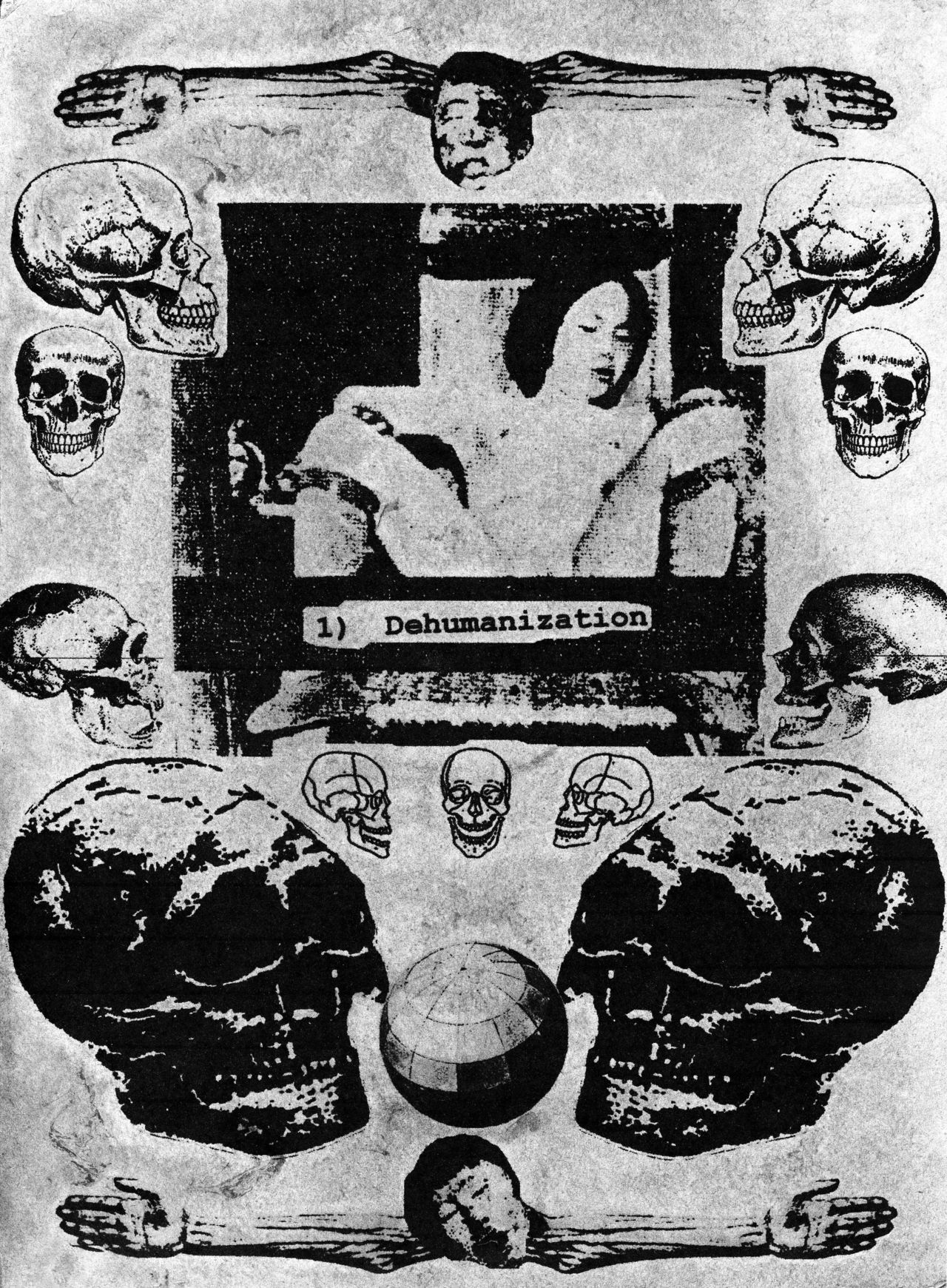


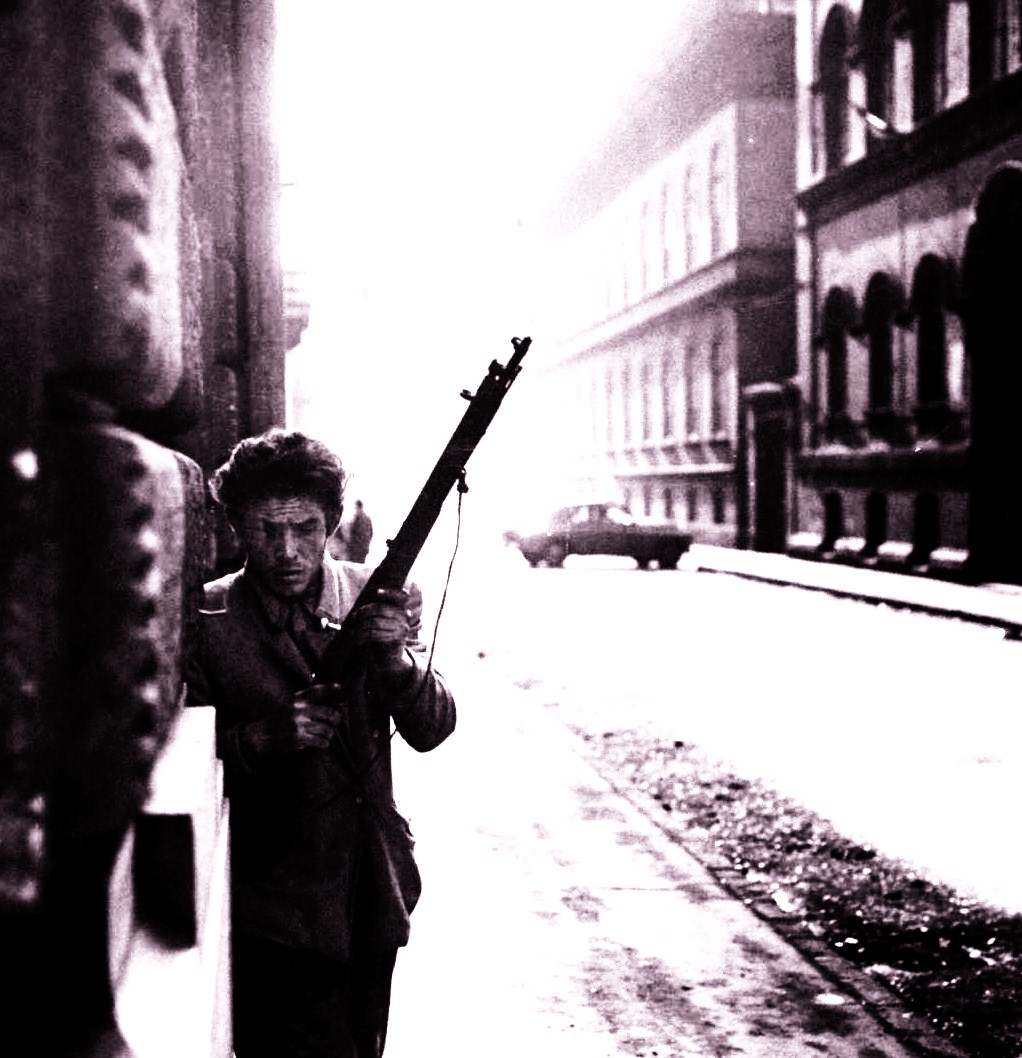
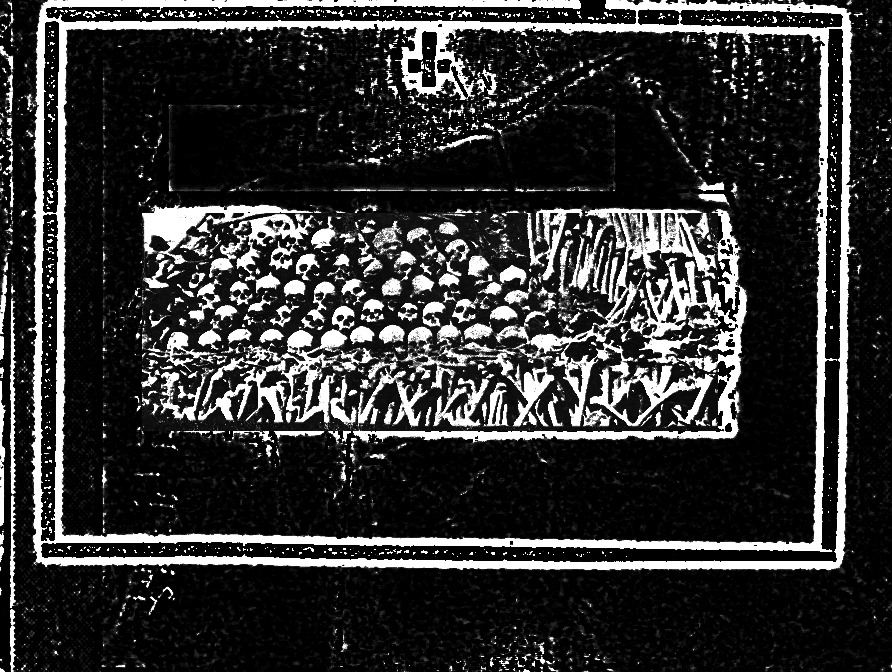
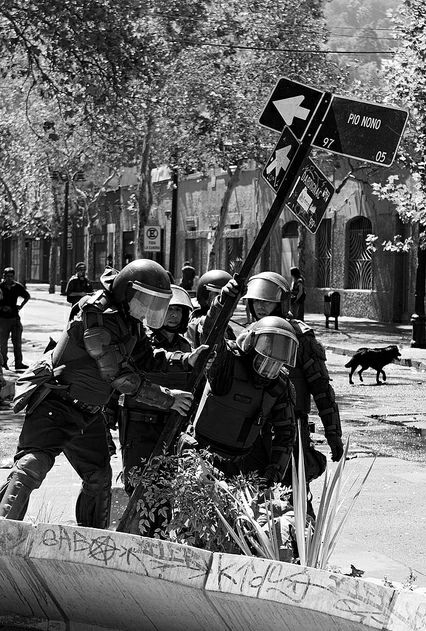
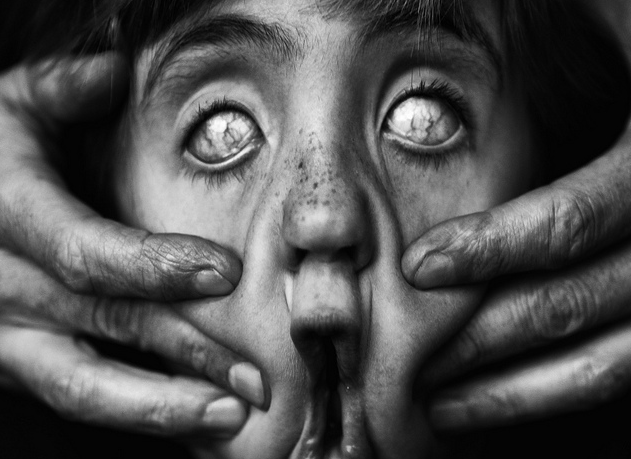


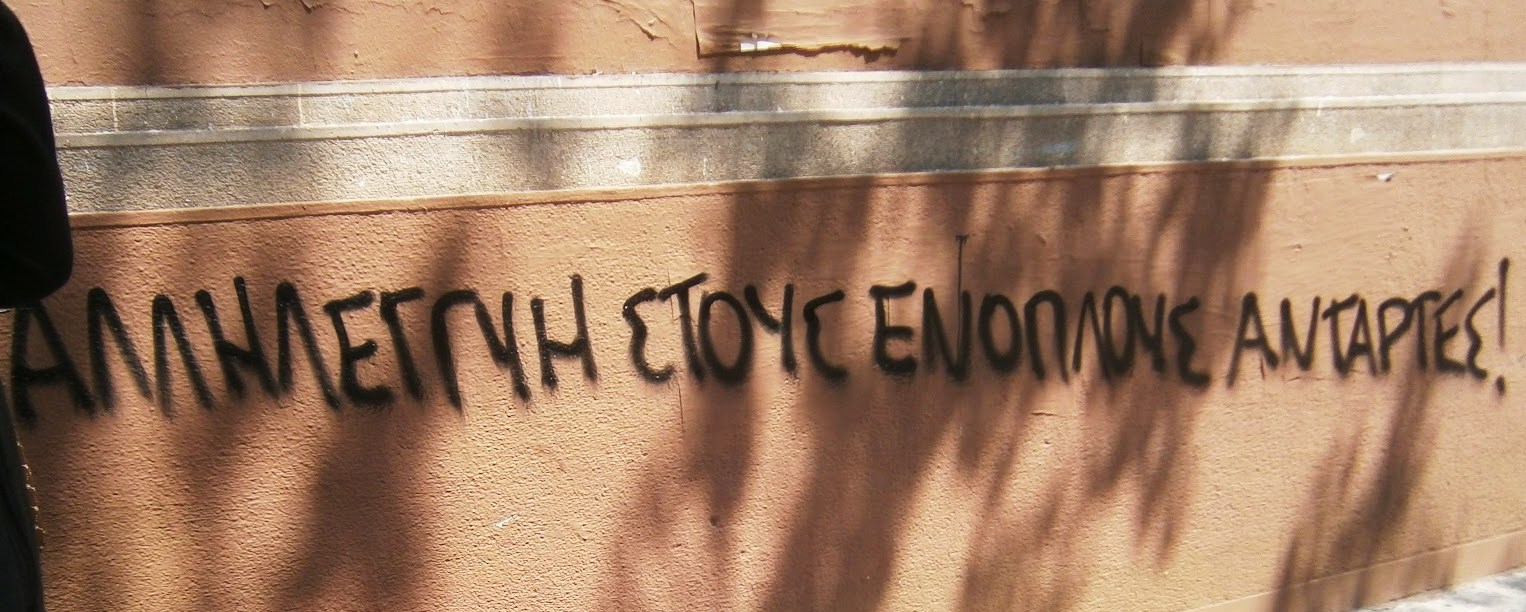

![Eurorepressione - Sulla conferenza a Den Haag sul tema "Anarchia" [corretto]](http://25.media.tumblr.com/tumblr_m0jvngOXtY1qa2163o1_1280.jpg)
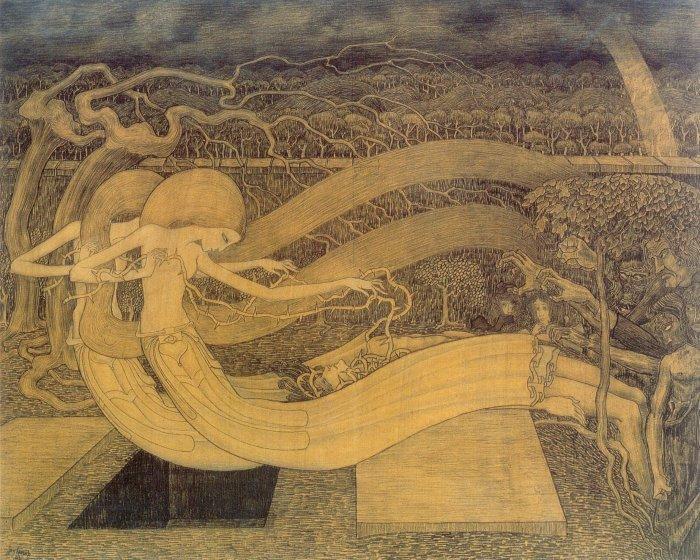
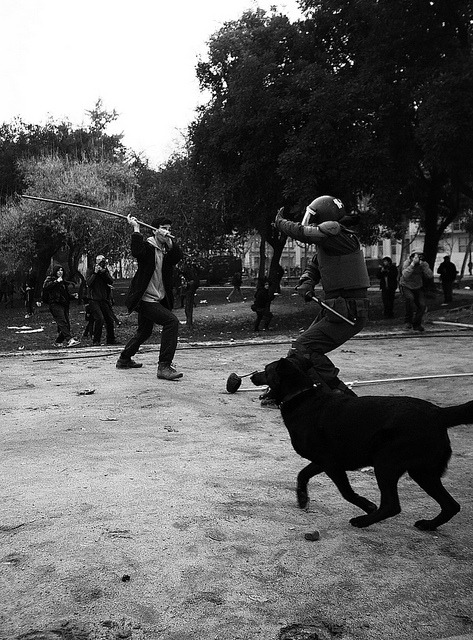
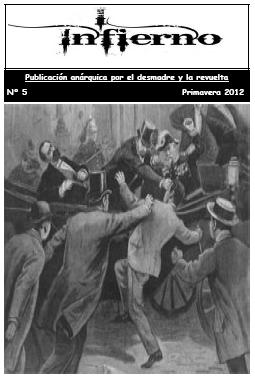
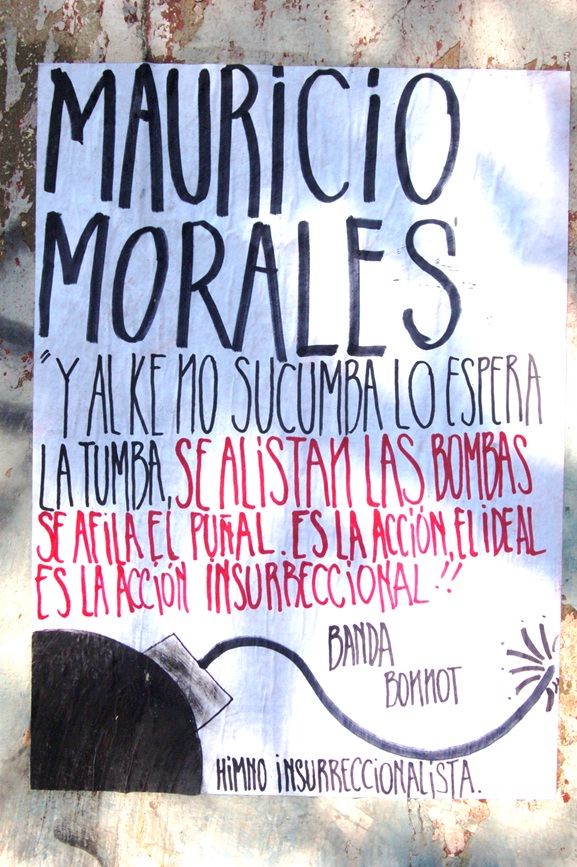
![A tres años de la Partida de Mauricio Morales: De la Memoria a la Calle [Stgo.]](http://metiendoruido.com/wp-content/uploads/2012/05/mmacividad.jpg)

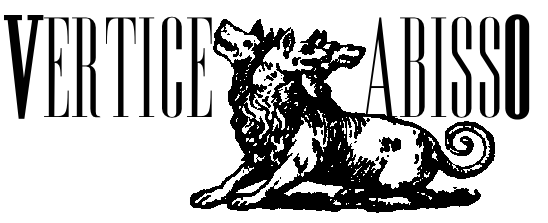



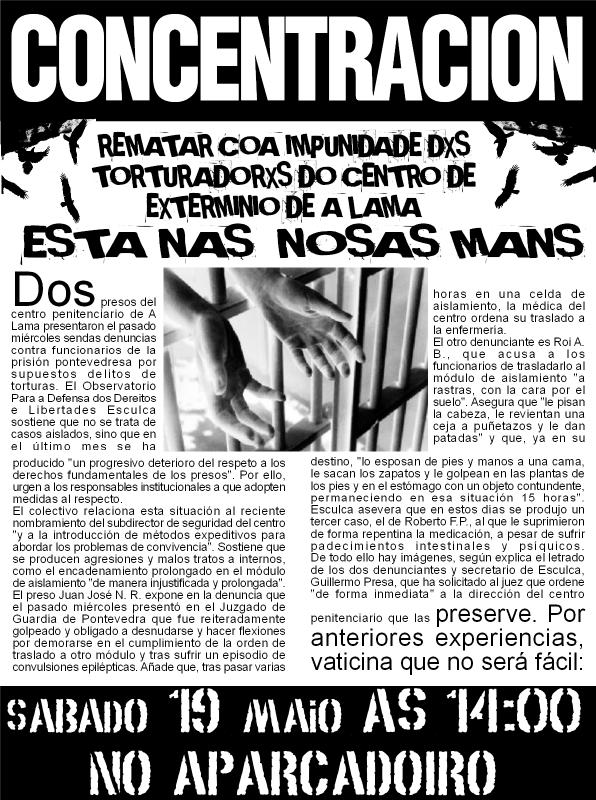

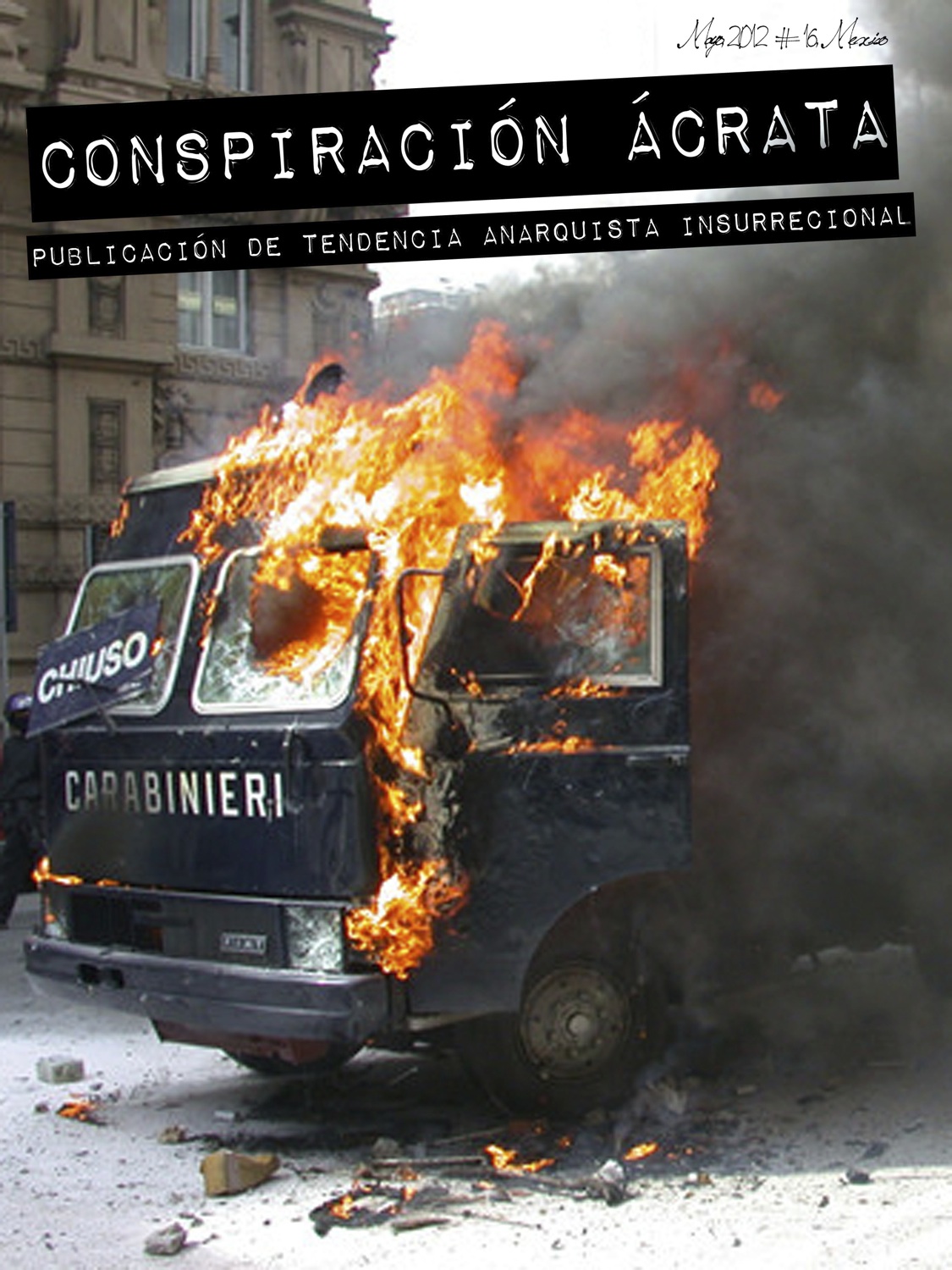

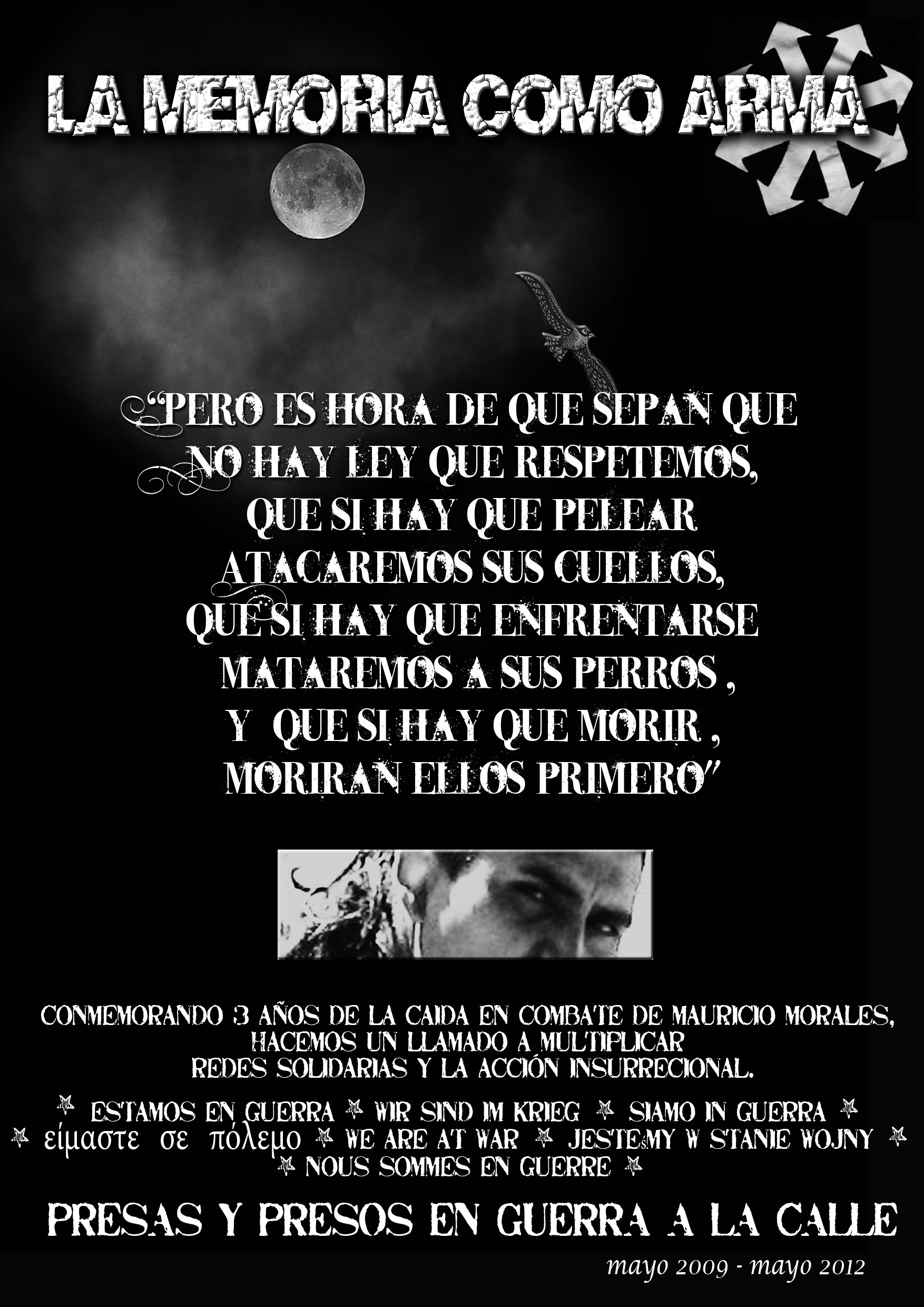
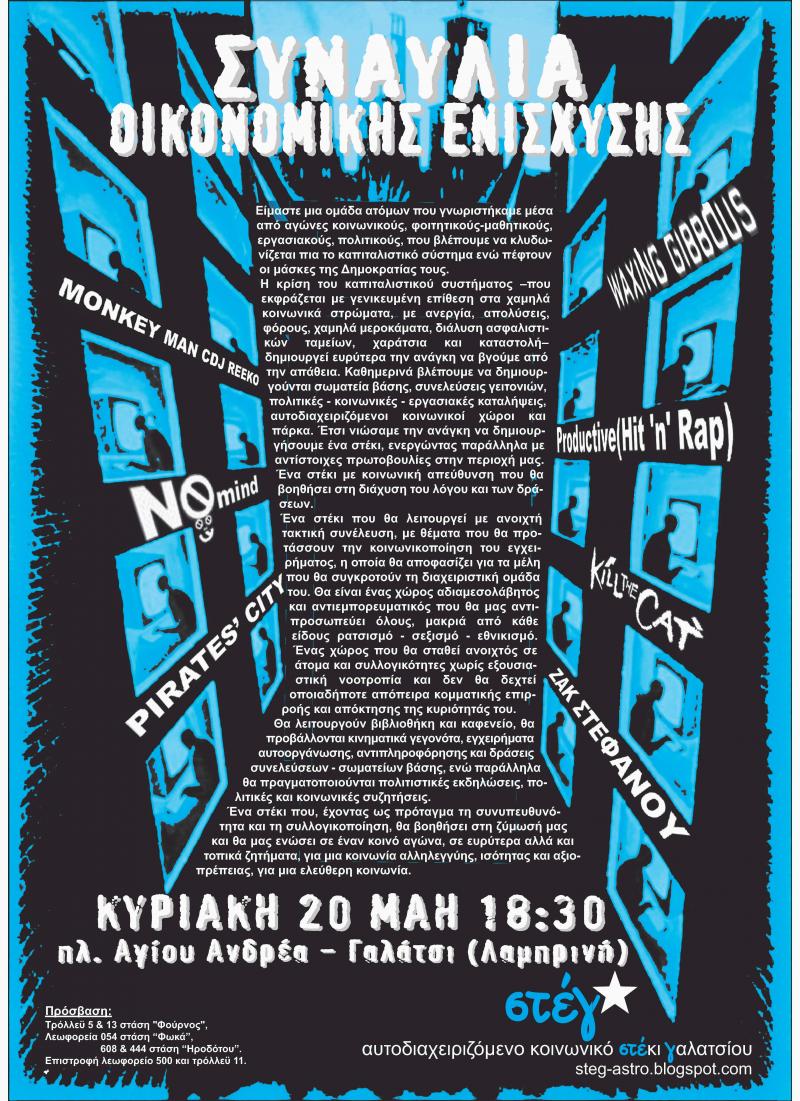








Nessun commento:
Posta un commento